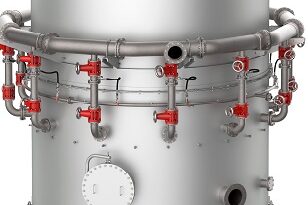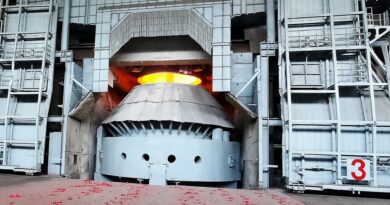Optima Classifier from Gravitas shows great potential in minerals processing
The proprietary, water-only density Optima Classifier™ developed by Gravitas Minerals has shown great potential in minerals processing, reveals Director Tebogo Kale. With iron ore, it has achieved +63% Fe in a single pass. On the other hand, for chrome processing, the Optima Classifier™ is used as a preconcentrator to produce a less than 10% chrome tail and/or to produce a premium grade such as chemical and foundry grades.
“We are currently seeing some great results in ferrochrome slimes, manganese, lithium, and zinc,” reports Kale. The technology will be on display at the DTI Pavilion in Hall 8 at Electra Mining Africa 2022 from 5 to 9 September. “We extend an invitation to prospective clients to put us to the test at Electra Mining by bringing in a 25-litre bucket sample for us to conduct amenability tests on our technology.
The Optima Classifier™ is also ideal as a fine-coal processing solution for ‘clean’ coal production, presenting an immediate export market for RB1, RB2, RB3, and duff coal grades. High-quality coal fines also offer a significant opportunity for briquetting, which in the past did not seem economically viable.
“If there is sufficient demand, fine coal could be briquetted to produce coal peas using organic binders. I believe this could bring about a serious case of remining the coal slimes dams purely to produce this product, which will reduce rehabilitation costs and lengthen the life of slimes dams,” predicts Kale.
This patent-pending, water-only density Optima Classifier™ is at the heart of the solution developed by Gravitas Minerals. The engineered pilot system consists of a feed preparation, beneficiation and separation and dewatering modules to ensure a high-quality product with the correct moisture content.
Typical products consist of ash below 16% and a calorific value of at least 27Mj/kg. this has been proven following successful commissioning of the Coal fines project in July 2022. Moisture plays a major role in the fine coal market and the water recovered from the product is immediately reused for processing. “To this end, our Ultra-G shaker has shown capability to dewater at 50µ, reducing product moisture down to 15%,” highlights Kale.
Grain sizes of up to 5mm can be processed, while unit sizes of up to 150t/h can be built. The discharge devices are electrically controlled, which presents the opportunity for an easy-to-operate total ‘green’ solution. The fact that the process solution does not draw much power allows renewable energy to be easily and effectively added as the main power source for sustainability. “The transition to renewables as a significant component of South Africa’s energy mix is not going to happen overnight. Any advances in clean coal production are critical to boost environmental awareness in the coal value chain and the impact on the triple bottom line of ‘people, planet, and profit’,” concludes Kale.




